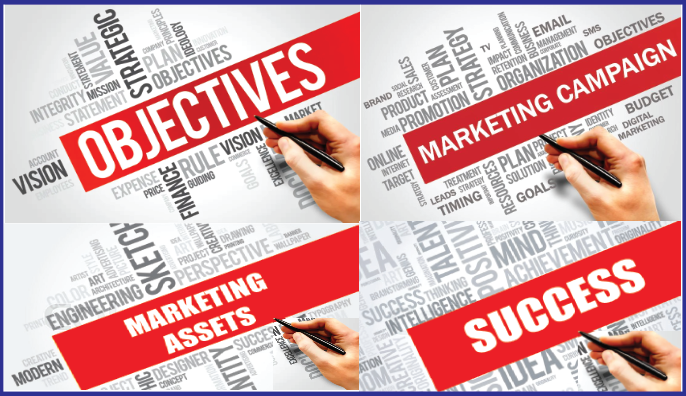Asking the Right Questions 2020: The Flip Side
Most of us know that better business development means asking prospects and customers the right questions. Who else should we be asking? Short answer: Ourselves .
It’s early in the new year, and we all have questions about the future. But let’s try something different and focus on questions from the past—specifically, the ones that didn’t get answered last year. Questions like . . .
- How much impact did you see from that top salesperson you promoted to sales manager?
- Were you surprised by unexplained lower sales volume?
- How much did that new product fall short of its projected sales—and why?
- What level of performance did you get from new inside-sales or customer-service hires?
- How much time did “too many good ideas” waste because of analysis paralysis—or no analysis at all?
Those specific questions might not be the ones you need to ask about your business. But they are the kinds of questions to ask. How do you find the right ones for you? Here’s a clue. Focus on nagging topics always in the back of your mind, topics about which you say, “We should really check that out.” You “know” they’re trouble but you don’t know just how much trouble.
We’ve seen too many clients (and prospects who became clients) unpleasantly surprised when they learned just how costly those kinds of problems can be. Our ears always perk up when we hear these potentially famous last words: “We know there’s a problem, but we don’t think it’s that big.” Take another look. If you want help, or need to do it quickly, we have a process that puts a dollar amount on the size of the problem. That way you won’t have to “think” about how big it is, you’ll know.
Here are a few other unanswered questions you might have from 2019 and a few answers.
Unanswered Question #1:
Why didn’t our terrific new product catch on?
The answer might be complicated—wrong market, poor research, poor marketing and sales alignment, unexpected field failures. Or it might be a lot simpler.
New products are like shiny new toys—they tend to command all the attention and all the excitement. Top management wants to move them, sales managers talk them up, and super-excited salespeople push them. Fascinated by new features and benefits, they want to make sure their prospects and customers are too: See all the new things we can do for you? Aren’t they terrific? You can’t help but buy! Unfortunately, buyers must be persuaded to buy. Simply educating them—showing and telling—isn’t enough. Especially in business-to-business selling, persuasion means guiding prospects to discovering that even the shiniest new products actually meet their needs.
Key Point: Enthusiasm in selling is required but not sufficient. In fact, it can be suffocating. What’s needed are consultative selling and persuasion skills teamed up with a customized sales process.
Unanswered Question #2:
Why did sales slump—or even collapse?
We’ve identified at least two answers.
A Dazzling New Product Has Stepped into the Spotlight. Unanswered Question #1 touches on one discouraging outcome of launching a new product: Salespeople fall back on hurry-up transactional sales skills. They are so busy talking about the new product’s great new features and benefits that they fail to determine whether those new bells and whistles reflect the needs of their customers and prospects.
But that’s not the only problem. By putting most of their efforts into selling a new product, salespeople tend to shortchange current products, which are likely bread-and-butter revenue. Management expectations that a new product will boost corporate sales, but that’s not always the way it works out. In fact, without proper preparation, the chances that those expectations won’t be met are high. What to do? Warn your sales force, manage expectations, and set balanced performance goals. (But do not curb your enthusiasm. Just control it.)
A Change that Should be Helpful Isn’t. Success doesn’t always beget more success, especially if you try to fix something that’s not broken or if you get too ambitious. More medicine doesn’t necessarily equal faster recovery.
For example, a large corporation came to us because the year’s sales were far below last year’s—which set records. After some Q & A, we learned that management credited last year’s success to the number of calls its sales force made. And they were probably right, at least partly. What they failed to consider was the quality of the leads and the time it took their sales process to unfold. Records were broken thanks not only to how many calls were made but also how effective they were.
What changed? The company had doubled the number of calls its sales force was required to make. That meant salespeople didn’t leap out of bed each morning eager to pull prospects through the sales funnel to the end, where the money is made. Instead, they crawled out worried about how many leads they had to get into the top of the funnel, where they spent way too much time. No longer were they qualifying leads and following sales calls through to yes, no, or even maybe. Good news: With our help, management recognized the mistake and, to their credit, took ownership. Reinstating last year’s number-of-sales-calls goals put revenue on the road to recovery. There was no small amount of damage done, but there was also at least one very big lesson learned.
Key Point: Don’t be so taken with the what of success that you ignore the why . Test new waters, no matter how clear they appear to be, before jumping in feet first.
Unanswered Question #3
We have a ton of great ideas. Why can’t we put them to work?
As everyone knows, great ideas are, well, great. But some are greater than others. How do you know which are which? It’s not easy because obstacles are everywhere. There’s not enough time, different people are proposing different ideas (with varying degrees of skill and enthusiasm), good ideas aren’t necessarily easy to understand or value, and some have been up in the air so long that you’ve almost forgotten them or they don’t apply any more. Even so, it’s important to sort them out. Just one or two could have a big impact on the future of your company, even charting a brand-new course.
Key Point: Take the time and make the effort to nail down two or three ideas that make the most sense to pursue. Yes, you can try to do it internally. But too often self-examination doesn’t produce the best results, if only because internal professionals have other responsibilities and they are probably wearing the same blinders everyone else is. If you’re concerned—or excited—about harnessing your great ideas, get in touch at 847-446-0008 or pkrone@productivestrategies.com. We’ve developed a straightforward process to help companies identify ideas that can be transformational—or just pretty darn good.
If you want to share your unanswered questions, please get in touch with us at 847-446-0008 or pkrone@productivestrategies.com. We can help get those questions answered—so you can move on to new ones.
TERRY FRANKE (1946-2020)
We are extremely sad to report that our friend and colleague Terry Franke passed away unexpectedly on January 21 at age 73.
He joined Productive Strategies in 2007 after retiring from the human resources consulting firm Hewitt Associates (now Aon Hewitt), where he was an early partner. In between, he launched his own marketing and sales consulting business, at times teaming up with us. One day he suggested that “maybe I should just join the firm.” Saying yes wasn’t difficult. Terry, I, and another colleague at our firm, Tom Hazlett, had been friends since we met at Kellogg, Northwestern University’s graduate business school, many years before.
“No matter what community he entered,” his family recently wrote, “Terry was always a driving force of positivity. Those who knew him would agree he lived every minute of every day to the fullest.”
Terry not only supported our clients with his professional selling and coaching expertise, but he also mentored more than 20 interns over 13 years. He took great pride in creating valuable personal and professional development experiences in large things and small. He made sure, for example, that the interns wrote thank-you notes during and after their internships, sometimes buying them stationery to drive the point home. In turn, he treasured every one of the many thank-you letters interns wrote him after they obtained full-time positions. Nudging people toward best outcomes, not pushing, was typical of his approach to business and to life. It was his style.
In recent years, we were privileged to watch as Terry launched a new business that applied his experience from 20 years as a member and eventually chair of the board of trustees of his alma mater, Lawrence University. The firm filled a highly specialized need, essentially creating a new marketing niche. It was dedicated to helping liberal arts college and university boards pull together to plan and execute the effective transition —not the recruiting and hiring—of their next president. The goal was to ensure success over the long term. True to form, he brought people together—university board chairs, in this case—in a peer-learning environment to share experiences in governance.
We miss him dearly—his wit, his kindness, his abiding concern for bringing out the best in everything and everyone with whom he became associated. That was his style, too.
The post Asking the Right Questions 2020: The Flip Side appeared first on Productive Strategies, Inc..




Contact Information
Phone: (847) 446-0008
Address: One Northfield Plaza #300, Northfield, IL 60093
Business Hours
- Mon - Fri
- -
- Sat - Sun
- Closed





